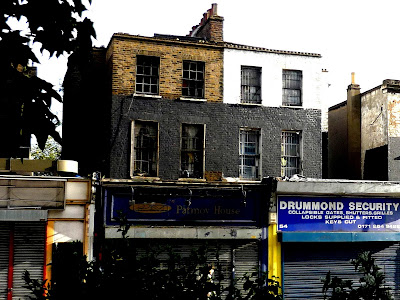Whilst politicians have recently been scrambling to take credit for the reopening of the East London overground railway to Dalston Junction they have, unsuprisingly, been silent about the scandal of Dalston Square’s £40million bus stop.
Despite the public outcry, Dalston’s heritage buildings have been demolished, and its environment is now to be blighted by nine further blocks of flats of up to 20-storeys, all for sale (with no affordable housing) to pay for The Slab .
The Slab is a £40million concrete raft over the railway cutting which, we were told, was essential to create a bus/rail Transport Interchange to support the 2012 Olympic bid. And regenerate Dalston. The new barbarism - the authorities vision for Dalston's future "regeneration"
The new barbarism - the authorities vision for Dalston's future "regeneration"
But now we have learned, from TfLs replies to Lord Low of Dalston and OPENs Freedom of Information Act requests, that only one bus will use The Slab - the 488 , the route of which is to be extended from Clapton to Dalston. There are no plans for London Buses to use the Slab for other bus routes terminating in Dalston and as for through route buses, they say, diverting them to use The Slab would just delay passengers. (Shouldn't they have thought of that before? Ed.)
So there we have it - the destruction of old Dalston’s Town Centre was to finance a £40million Olympic Transport Interchange for use by just one bus that doesn’t even go to the Olympic site (and neither does the train).
With schemes of such monumental environmental and financial extravagance, and pointlessness, no wonder our government is bankrupt and the electorate disenchanted. But how could the public have been so mislead? In a culture of official deception just remember that old adage “Don’t believe anything in politics until it's been officially denied”.
PS TfL have also said that having the Transport Interchange means bus drivers won’t have to go all the way back to the garage to get a cup of tea. So there’s a comfort.





















 In October OPEN learned of the
In October OPEN learned of the














